Occupational Illness
« BackOccupational Illness Occupational Illness know by several other defining terms are workplace injuries from long term exposures to biological, chemical, physical and ergonomic hazards. There are Biological risks such as moulds, bird droppings, and insects. Chemicals such as Carbon monoxide, phosphate ester or minerals like asbestos, lead and silica. Physical exposures such as heat, cold, noise, sunlight or ergonomic risks such as repetitive movements and awkward positioning during work activities. In some cases there may be a combination of all three of these risks in the same environment such as in a damp and cramped confined space. So what do we need to do to protect ourselves? How can we get the job done safely a repeated number of times or even daily without undue risk?
First we need to get familiar with the risks of the workspace we will work in. This will reveal the environmental risk exposures that may exist or may develop. What is in the space, what Each environment will require different measures to reduce risk like if we are in a cable vault, out in the open air or in a warehouse. What is the atmosphere composed of and do we have any respiratory risks? Can we mitigate the risk with ventilation or do we need a respirator, supplied air respirator or SCBA.
Second, are there physical risks that can cause injuries like cuts, overloading the body or Musculoskeletal Disorders (MSDs). Repetitive stress injuries from repeating the same movement over and over? Are there extended periods where awkward postures are held or cramped positions maintained? Some of the physical risks can be mitigated with personal protective equipment, anti-fatigue matting or padded or taped edges but how do we prevent the RSI risk? The basic prevention for RSIs is posture, positioning, and taking breaks. In most cases an ergonomic analysis must be performed to identify the risks and prescribe a preventative measure for the workers performing the task. An employer must be aware of what the exposure limits set out in R.R.O. 1990, Regulation 833 (Control of Exposure to Biological or Chemical Agents) and Ontario Regulation 490/09 (Designated Substances) under Ontario’s Occupational Health and Safety Act. The Ministry of Labour has proposed changes to the Occupational Exposure Limits under the Occupational Health and Safety Act. Make sure as an employer you are informed, train and protect the workers and always seek out the best ways to protect.
Third, we need to train our workers on how they will protect themselves based on the known risk and train them on what to do if something new arises. For the known risks workers need to implement the safe control measures prior to starting a task such as starting a ventilation system. Then select, inspect and wear the appropriate PPE and follow the safe work plan developed for the specific task. For new risks that occur or are identified workers must be instructed to stop work (safely), report the safety risk to their supervisor and provide input for the solution to the risk. Workers that are involved in solutions will also be invested in following the same solutions.
The fourth thing is to periodically review the risks, review the safety measures and PPE and make sure the safe work plan is being followed and is effective. Document the process and keep records of the job hazard assessments, ergonomic studies, testing or other inspections related to the risk in the workplace.
Occupational illnesses can be prevented by; taking a good look at what the risks are, consult the regulations or specialist resources as required, mitigate the risks to the safest level, train the workers to a safe work plan, monitor the process and record the results. |







